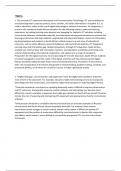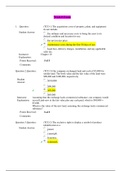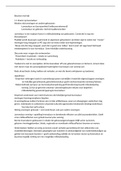Overig
CIC2601 Assignment 03. Due 02 August 2024
- Vak
- Instelling
Part 1: Understanding ICT Integration in South African Schools (40 marks) 1. Define ICT (Information and Communication Technologies) and explain why its integration is crucial in the context of South African education. [10]
[Meer zien]












